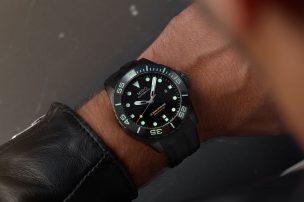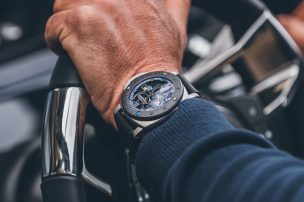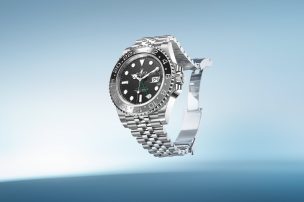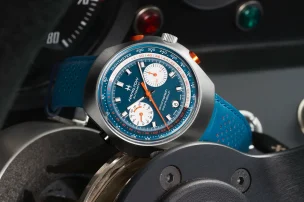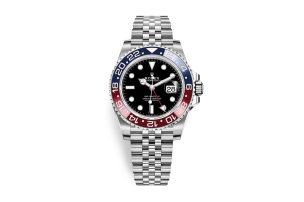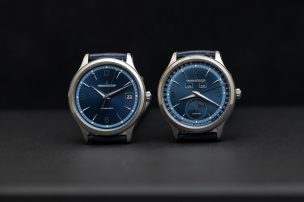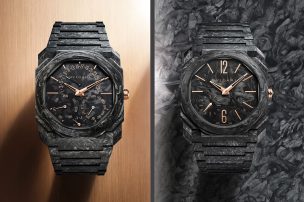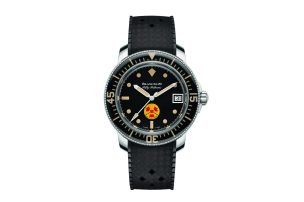
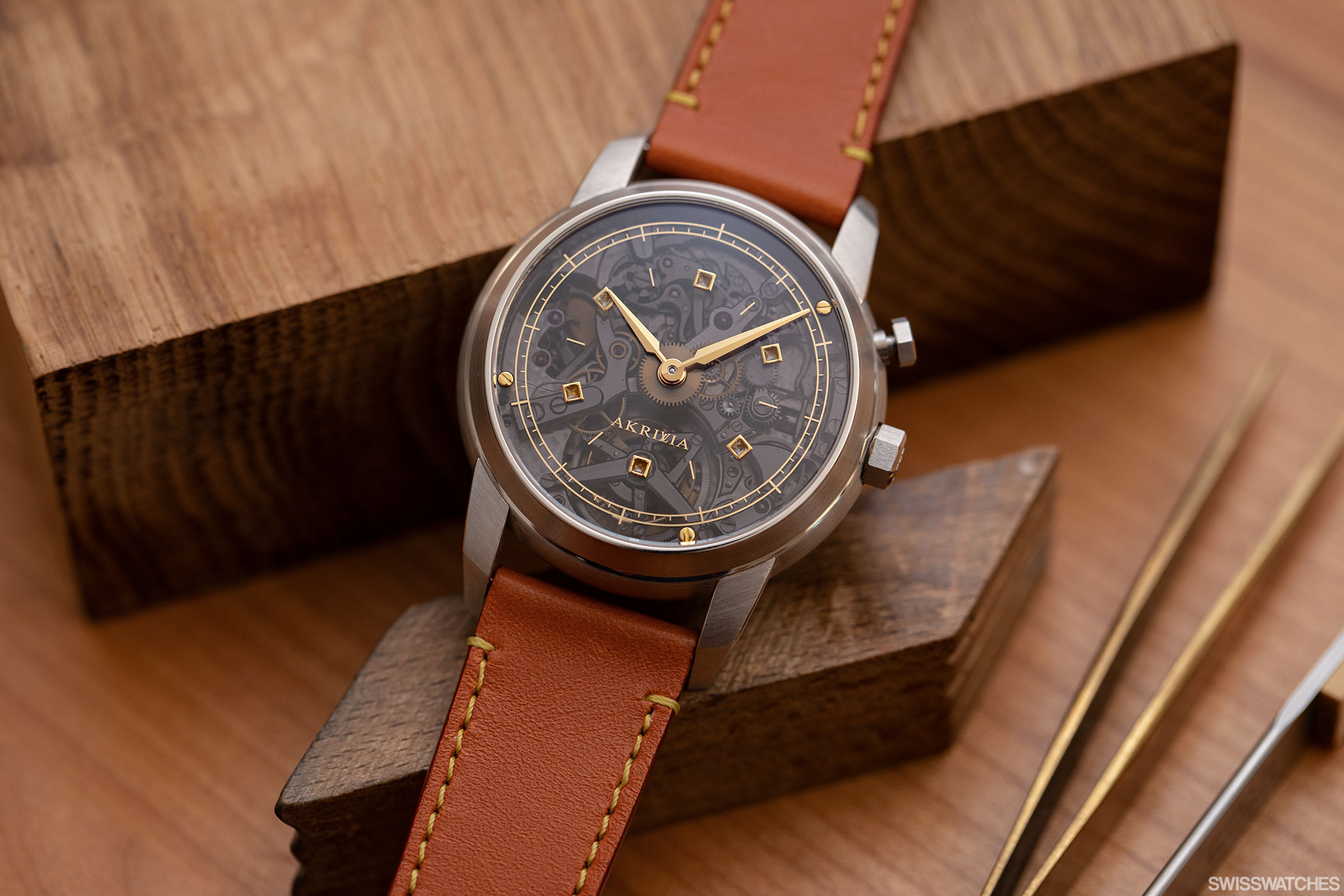
Let’s Get Technical: Louis Vuitton x Akrivia LVRR-01 Chronographe à Sonnerie
We’ve already covered the Louis Vuitton x Akrivia LVRR-01 Chronographe à Sonnerie in great detail, from interviews with Rexhepi to analysis of the unexpected collaboration. Now, however, it’s time to get technical – with a little help from Jean Arnault and Rexhep Rexhepi, who both shared some thoughts with us at the launch in Los Angeles yesterday.
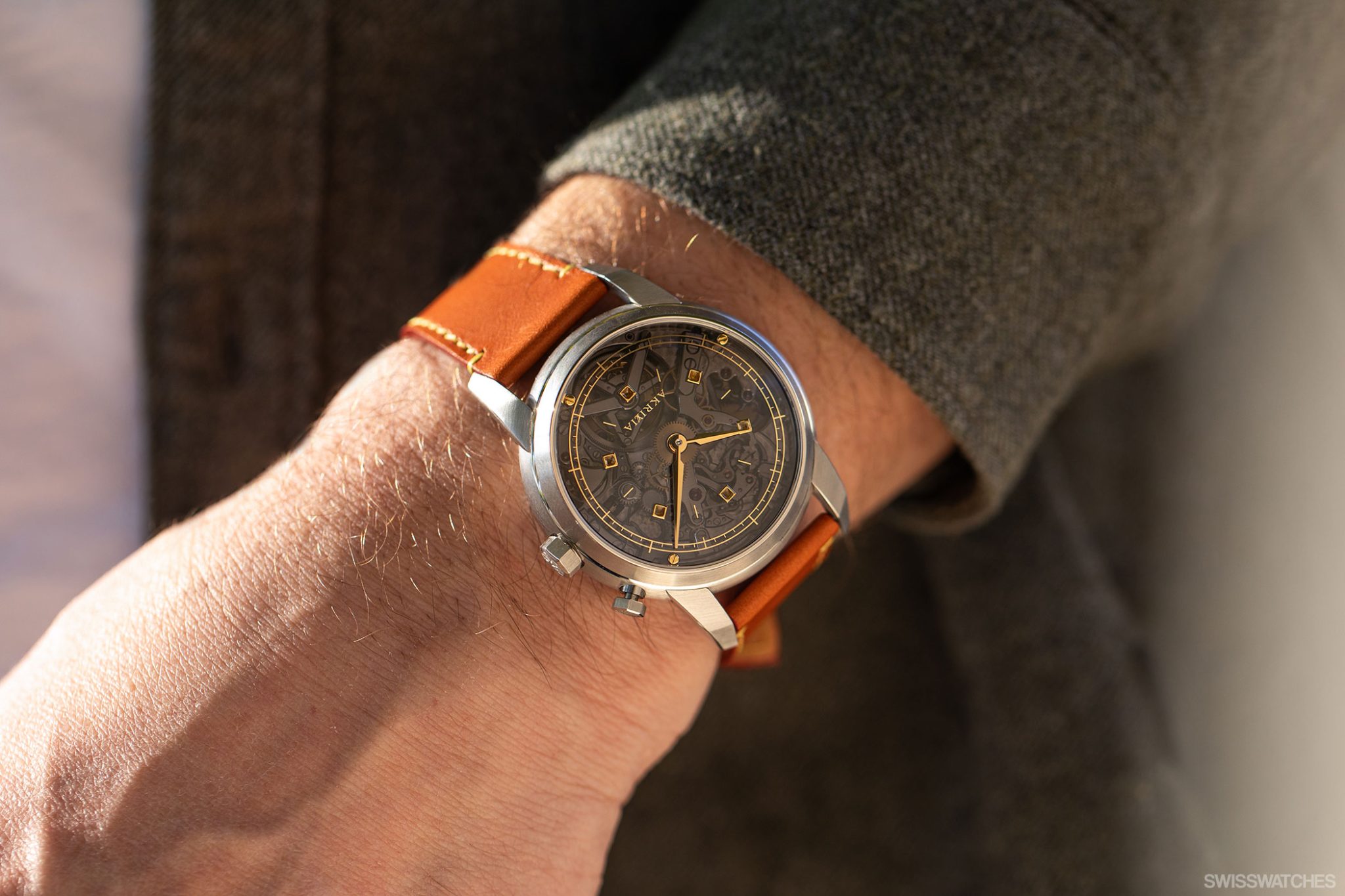
LVRR01 Chronographe à Sonnerie: The Case
The case of the LVRR-01 Chronographe à Sonnerie is the work of Akrivia’s own master case-maker, Jean-Pierre Hagmann, whose initials [JHP] are present on one of the lugs. While the watch does indeed have a Tambour case, for which Louis Vuitton’s watchmaking department is best known, it remains thin and classical in order to also match with Akrivia’s aesthetics. Meanwhile, the case diameter is a very specific 39.9 mm while the height is 9 mm: ‘We definitely wanted to be under 40 mm with the diameter, and under 12 mm for the height’, supplies Rexhep.
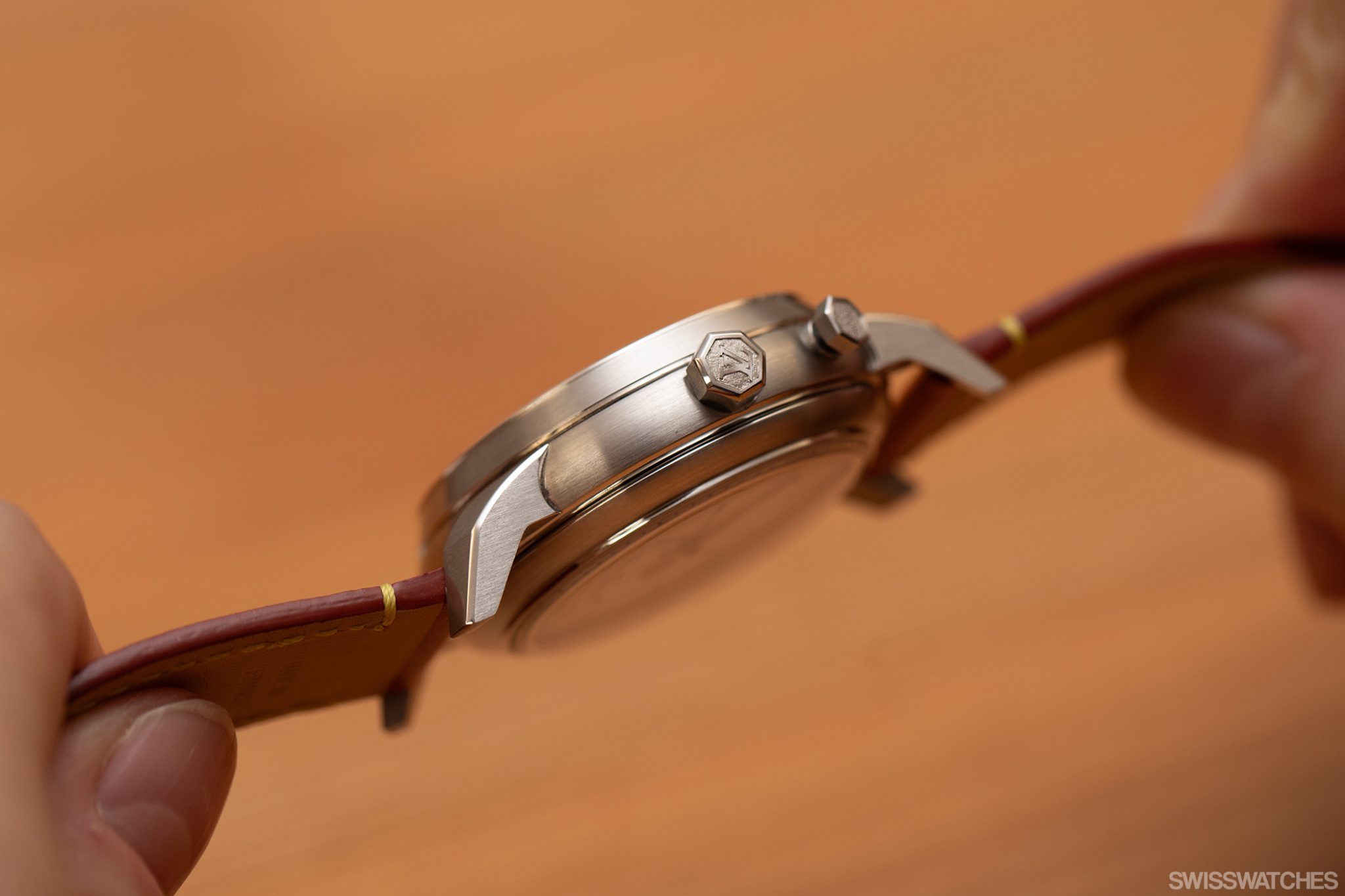
The tall, sloping bezel and elegant lugs draw on gentlemen’s watches from the mid-1900s. Meanwhile, the crown and chronograph pusher each have a seven-sided form in a nod to Louis Vuitton watches, but are hand-crafted in the Atelier Akrivia style. Chamfered on the edges just like the parts of the movement, the crown and pusher use Rexhep Rexhepi’s distinctive hand-hammering finishing. Turning the watch over, the other side of the platinum case bears a pretty chilled-out engraving, referencing the collaboration: ‘Louis cruises with Rexhep’. The watch case is water-resistant to 30 metres.
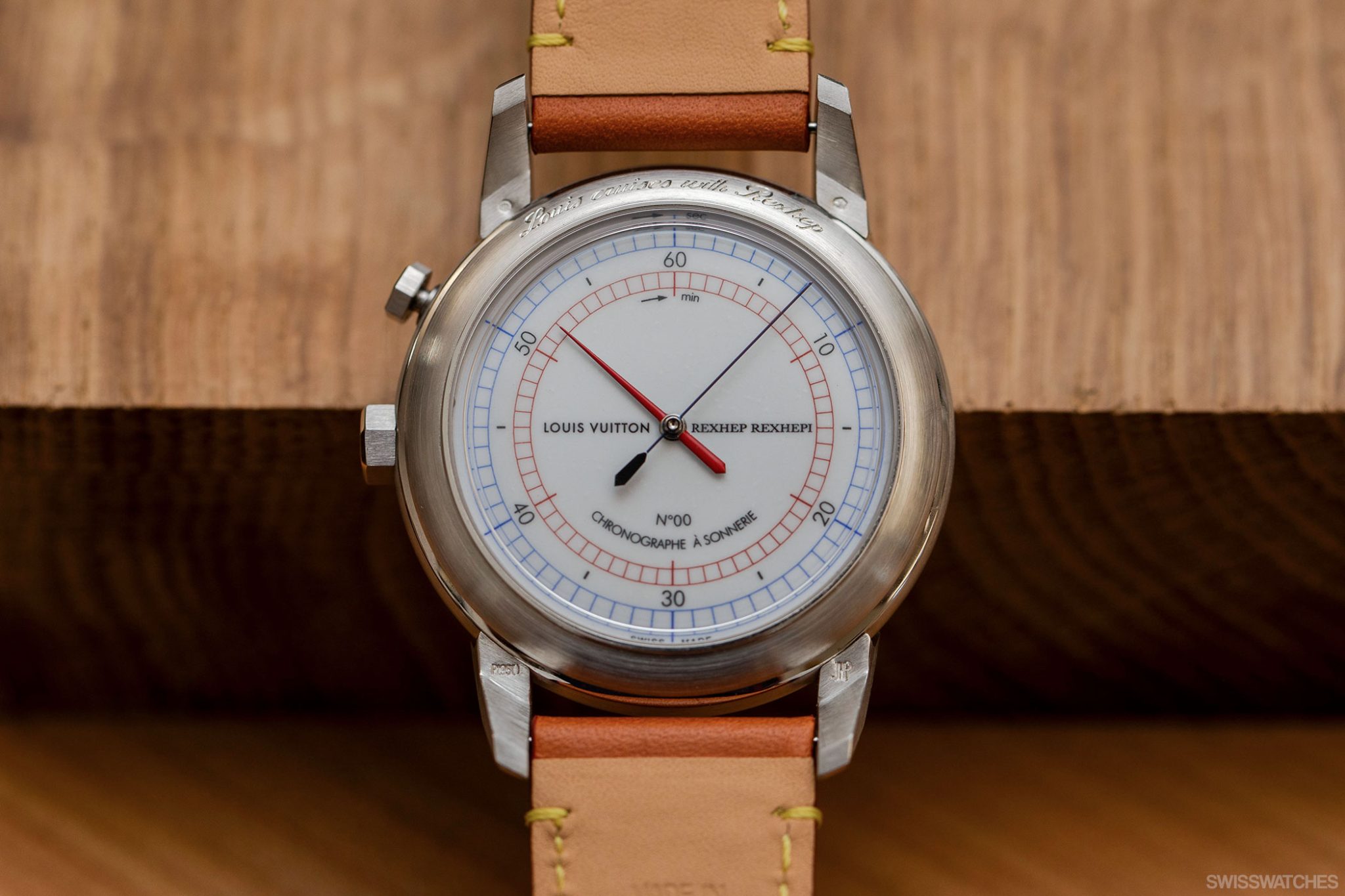
Along the top of the case on the second dial read the words: ‘Louis cruises with Rexhep’
The dials
The skeletonised front dial of the LVRR-01 has a contemporary aesthetic – and although it reveals the ground-breaking movement, the style is nevertheless very subtle due to the use of tinted sapphire crystal, thus darkening the view of the calibre below. The dial bears the name ‘Akrivia’, although the V rather cleverly intertwines the Louis Vuitton ‘LV’ logo. ‘This is the first time that the Louis Vuitton logo has been integrated into someone else’s logo’, points out Arnault.
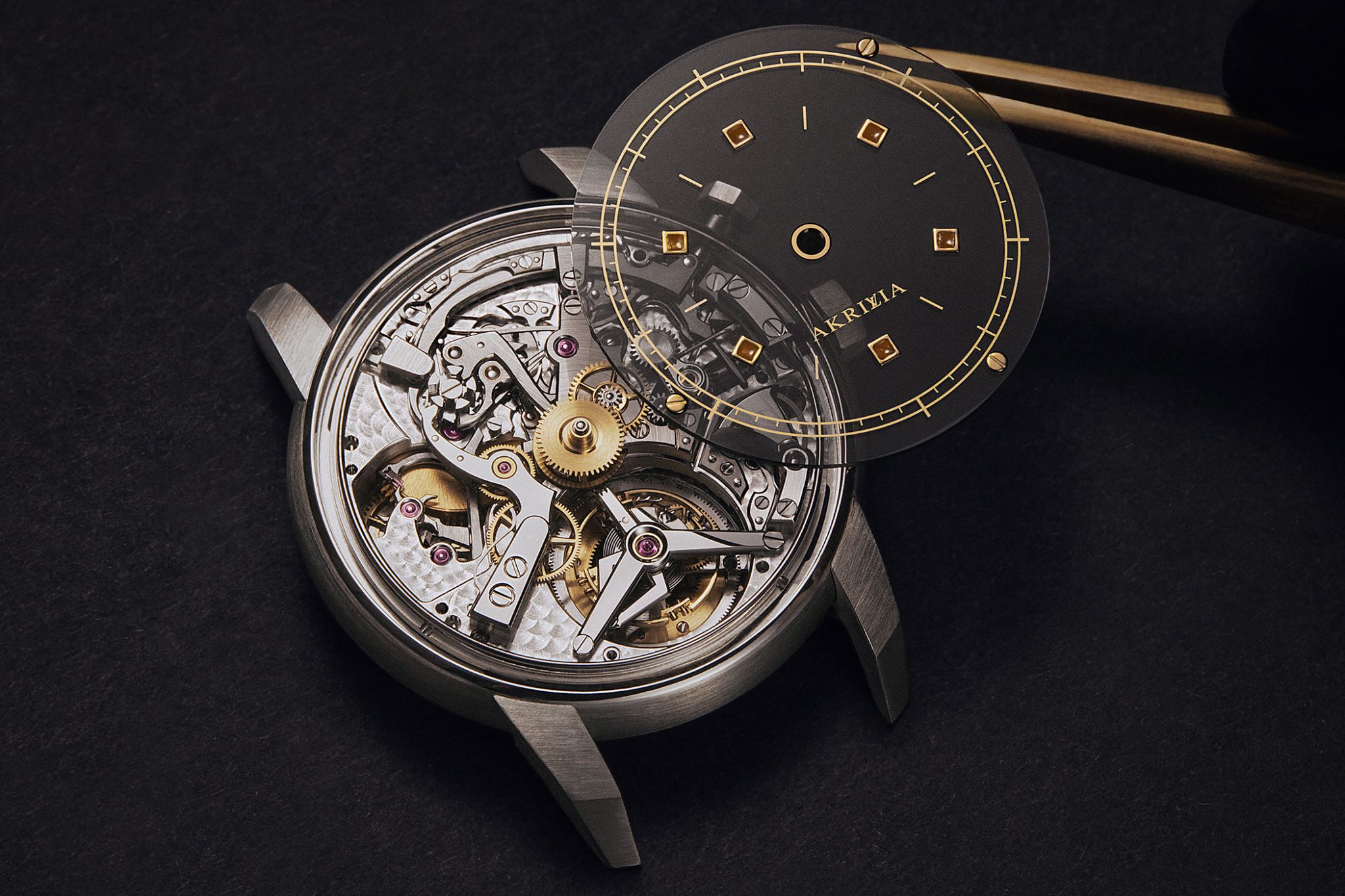
The ‘AKRIVIA’ logo integrates Louis Vuitton’s ‘LV’ logo at 6 o’clock
Likewise bringing the two brands together as one, the cubed indices containing plique-à-jour enamel evoke LV’s Spin Time watches, while the gilt minute track evokes the Rexhep Rexhepi Chronomètre Contemporain (RRCC I & II). In addition, the gold screws dotted around various points of the dial are a quiet nod to Louis Vuitton’s distinctive yellow thread stitching.
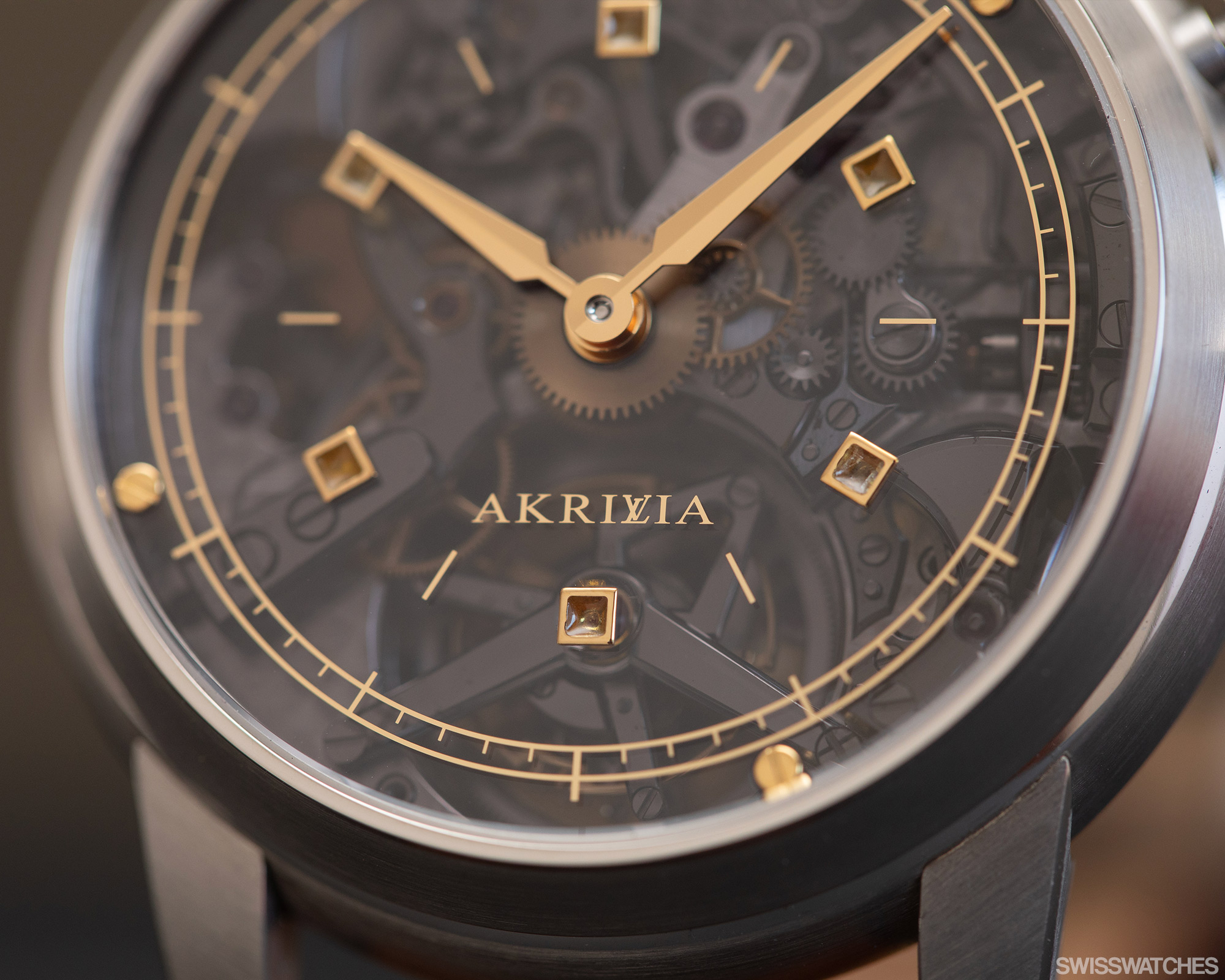
Interestingly, while the second dial’s design is the work of Rexhep Rexhepi, we can credit its production to La Fabrique du Temps’s own in-house enameller, Nicolas Doublel. Despite the white grand feu dial’s aesthetic largely resembling 1940s pocket watches, Louis Vuitton aficionados will also notice the printed chronograph tracks’ resemblance to the dials of the brand’s first watches, the Monterey I and II. ‘I find the chronograph tracks really amazing,’ supplements Arnault. ‘To me, they really look like old-school blackboards. Painted by hand, the artisans take a piece of string, paint everything, then erase the chalk around the outside. It’s really beautiful. Different artisans worked on the logo [with Louis Vuitton on the left of the dial, Rexhep Rexhepi on the right].’
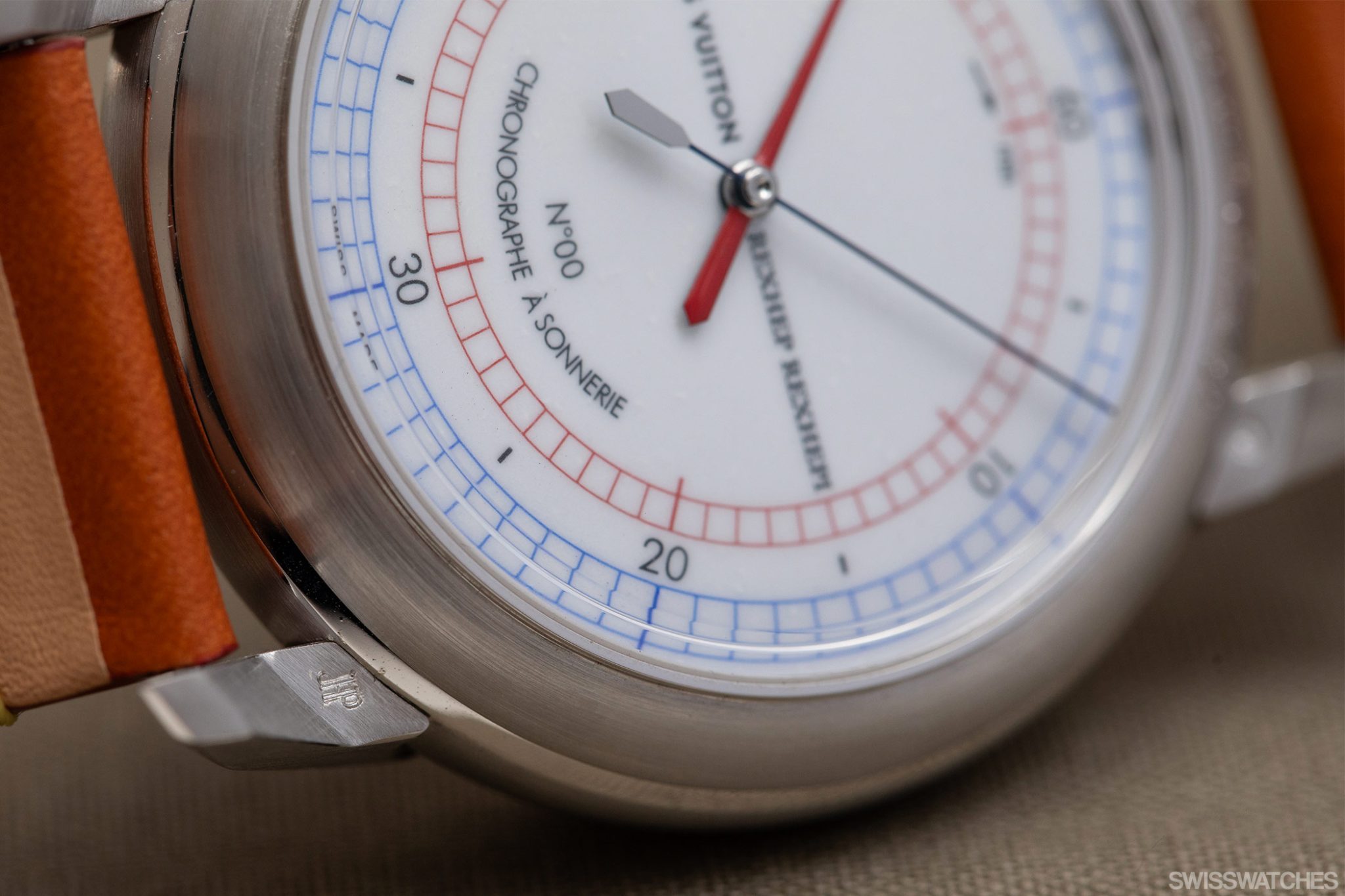
The movement
This is what we’re all really here for: the technical specifications of this watch, principally the one-of-a-kind calibre LVRR-01. What we have here is a precision chronometer that integrates a tourbillon regulator while indicating not only hours and minutes, but also measures elapsed time with the help of a sonnerie mechanism. This is a first for the watch industry. So how does it work?
The tourbillon
Let’s start with the tourbillon, nestling on the front dial at 6 o’clock. This innovative tourbillon, which is the work of Rexhep Rexhepi, completes one revolution every five minutes (bear in mind, most tourbillons require only one minute). This was made in the spirit of historical chronometers. Likewise, inside the tourbillon cage is a balance wheel with twin broad arms and eight inertial regulating weights, with its inspiration stemming from marine chronometers.
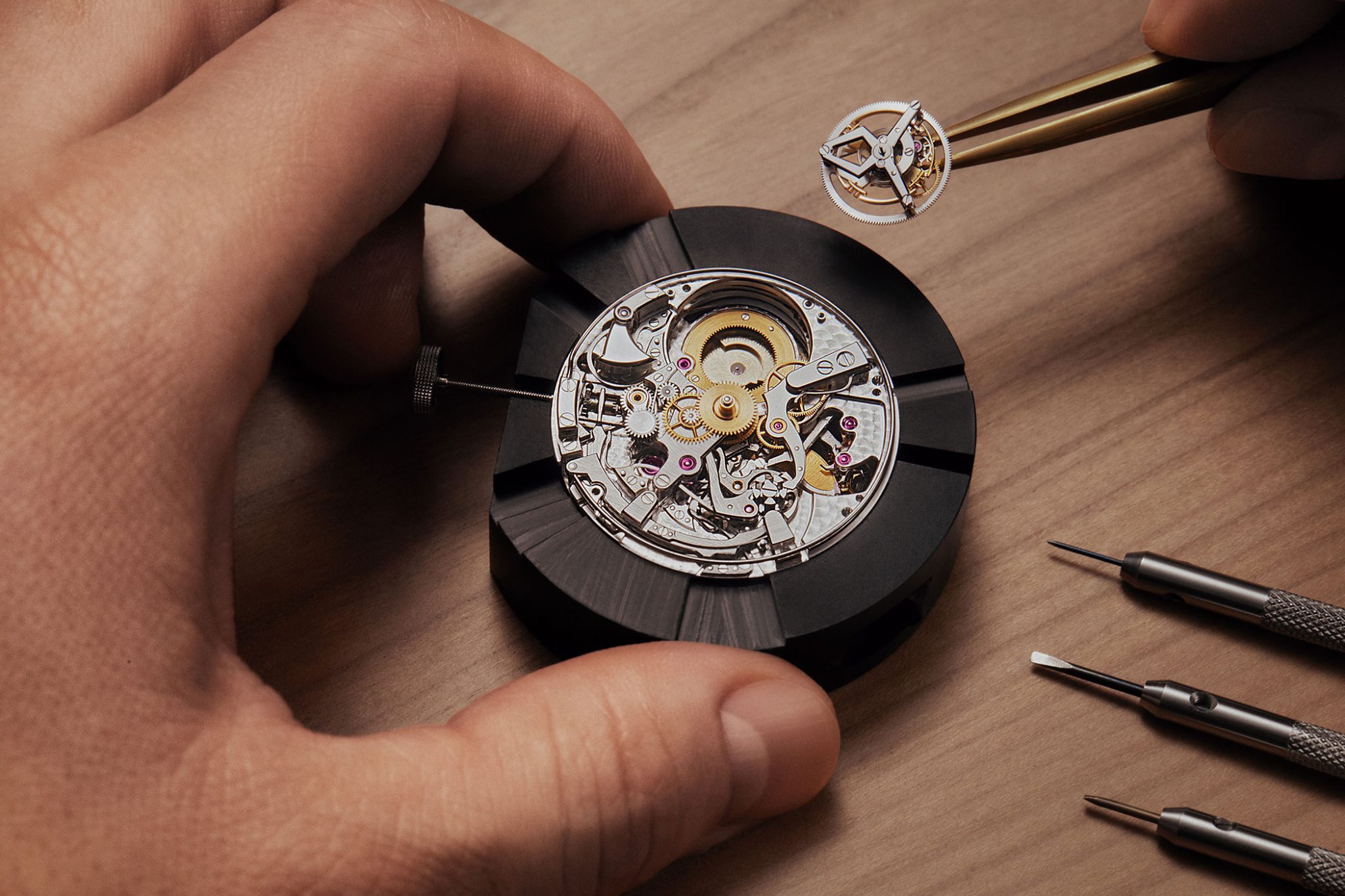
The Chronographe à Sonnerie
Meanwhile, Rexhepi combines chronograph and sonnerie in the LVRR-01 calibre in yet another nod to historical pocket watches. In the modern watchmaking world, however, this combination remains very much a rarity. The chronograph functions of start, stop, and reset all activate via the pusher at two o’clock. Working alongside the chronograph, a single chime strikes as each minute passes. Clear and musical in tone, the chime is sounded by a black-polished steel hammer striking a tempered steel gong, developed at Atelier Akrivia and emitting a single harmonious note to signify the passing of 60 seconds.
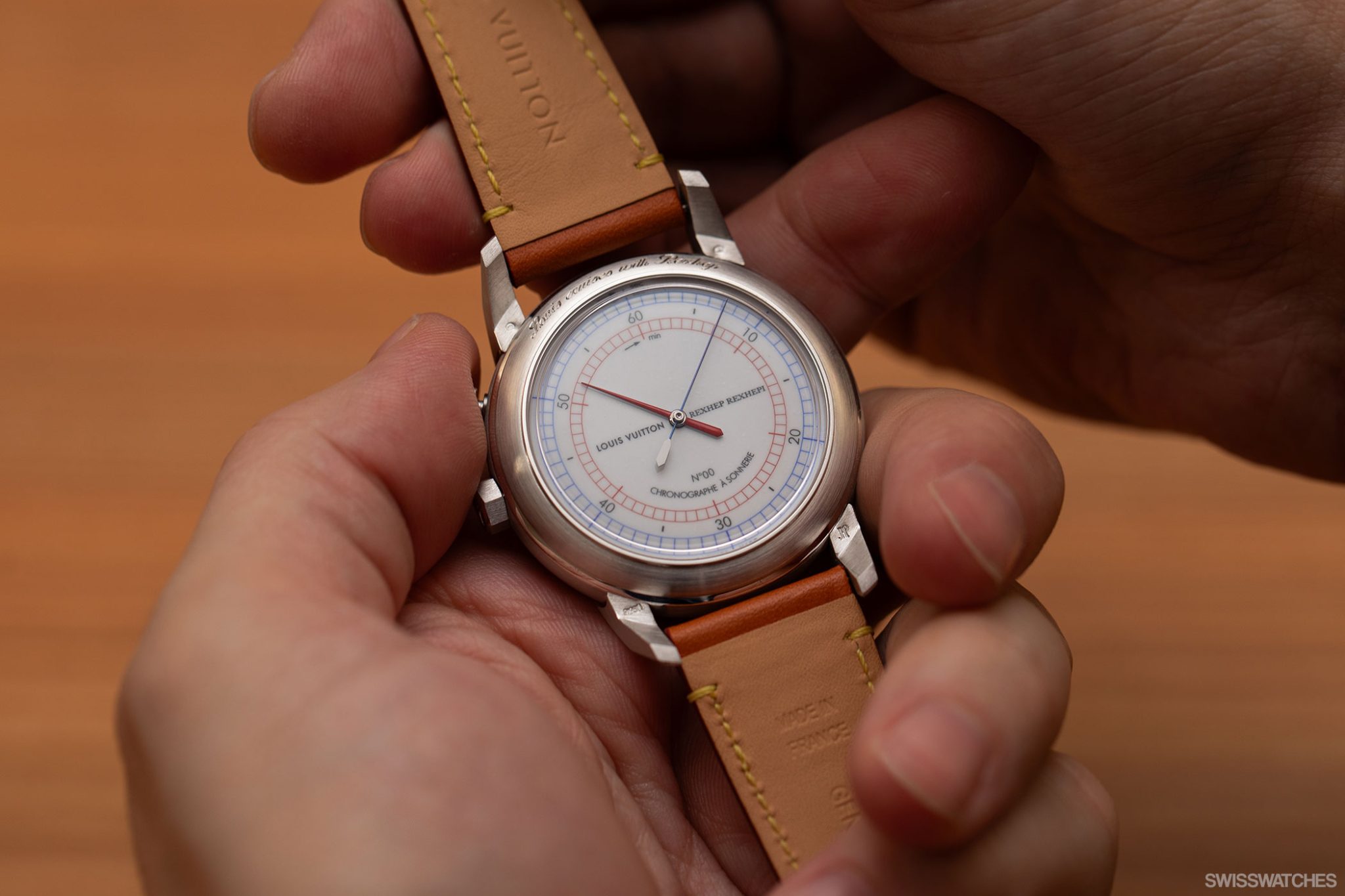
The chronograph functions of start, stop, and reset all activate via the pusher at two o’clock
Providing power for the LVRR-01’s three complications
Powering the chronograph, sonnerie and tourbillon – as well as getting them to work in sync – was no easy feat. Nevertheless, Rexhep Rexhepi devised a concise solution in the form of twin barrels: one power source for the timekeeping portion of the movement and the chronograph, and another for the chime, but with an ingenious twist. While the standard approach would have been to segregate the barrels and allow them to run independently, Rexhep Rexhepi devised a construction in which the second barrel links to the gear train in a particular way.
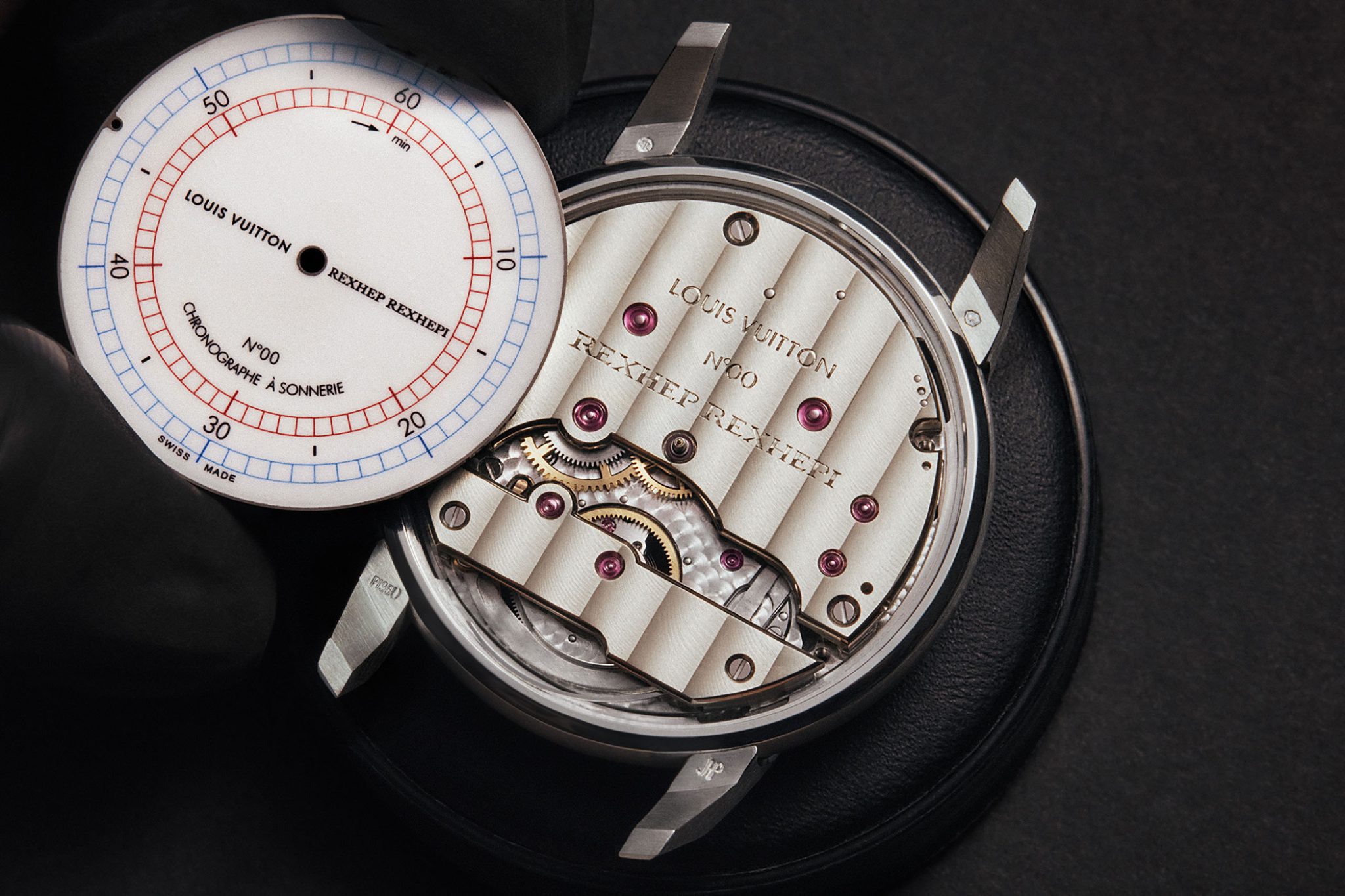
Once the wearer activates the chronograph and thus releases the striking mechanism with the hammer, the second barrel is also activated and no longer blocked. Energy is thus supplied to the base gear when the chronograph and striking mechanism are running, ensuring that the complications have sufficient energy to function properly without disturbing the LVRR-01 movement. Thanks to these innovations, the watch has a 72-hour power reserve and beats at a frequency of 3 Hz.
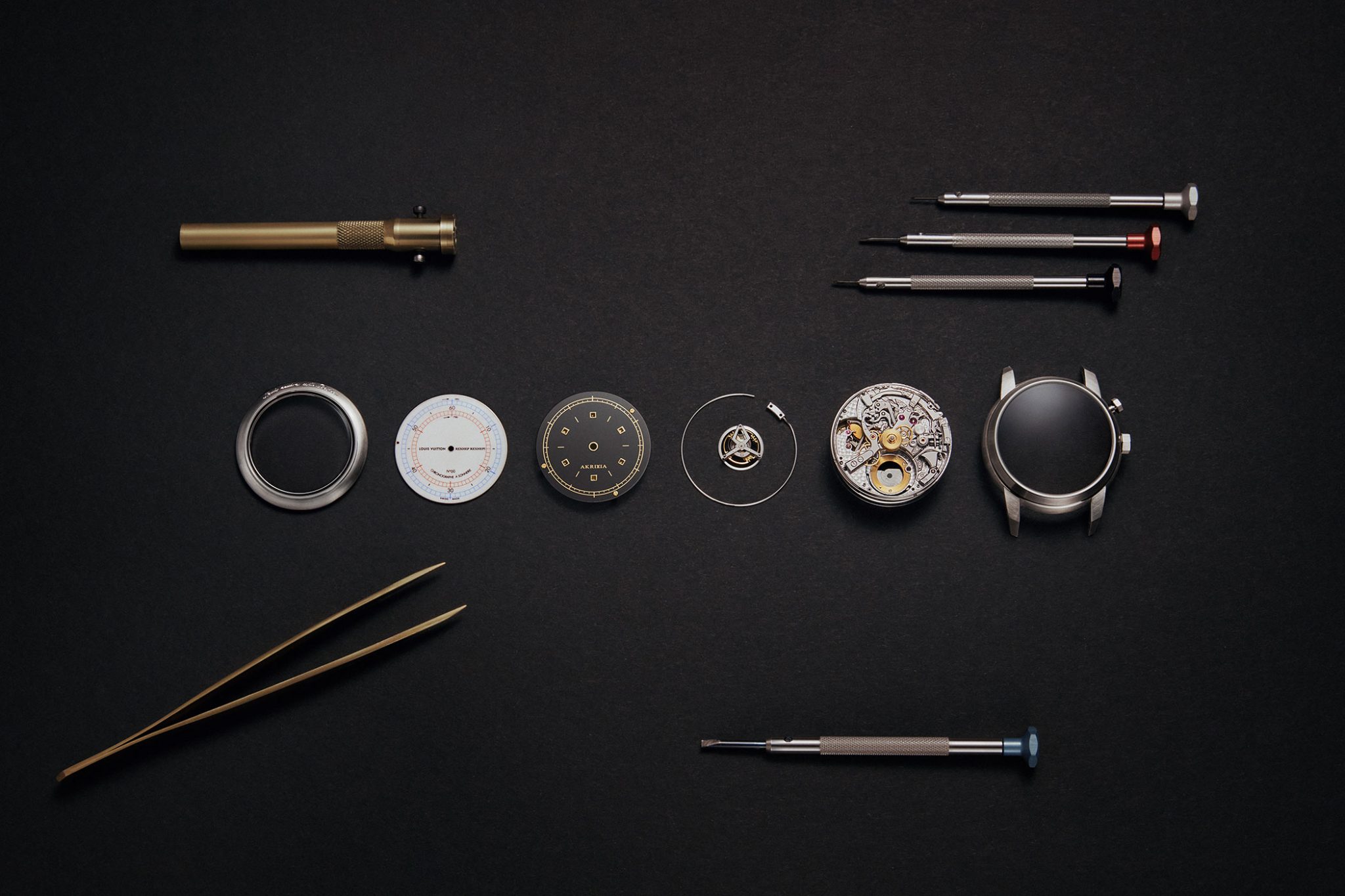
Finally, the wearer can also admire the mechanical ballet responsible for the chimes through the front sapphire crystal dial. The sonnerie and second barrel are linked to secondary escapement featuring jewelled pallets, with this secondary escapement releasing the energy of the second barrel cyclically, thus ensuring that the chiming mechanism strikes precisely and regularly.
Presentation box and strap of the LVRR-01
Now that horology class is over, we can return to basics with a rundown of the strap and presentation box. As one would hope, Louis Vuitton and Akrivia present the watch in a Louis Vuitton trunk. The hand-painted trunk takes its inspiration from the distinctive Monterey-esque chronograph scales, and features the Akrivia logo as well as the watch’s individual serial number (10 pieces of the watch are available).
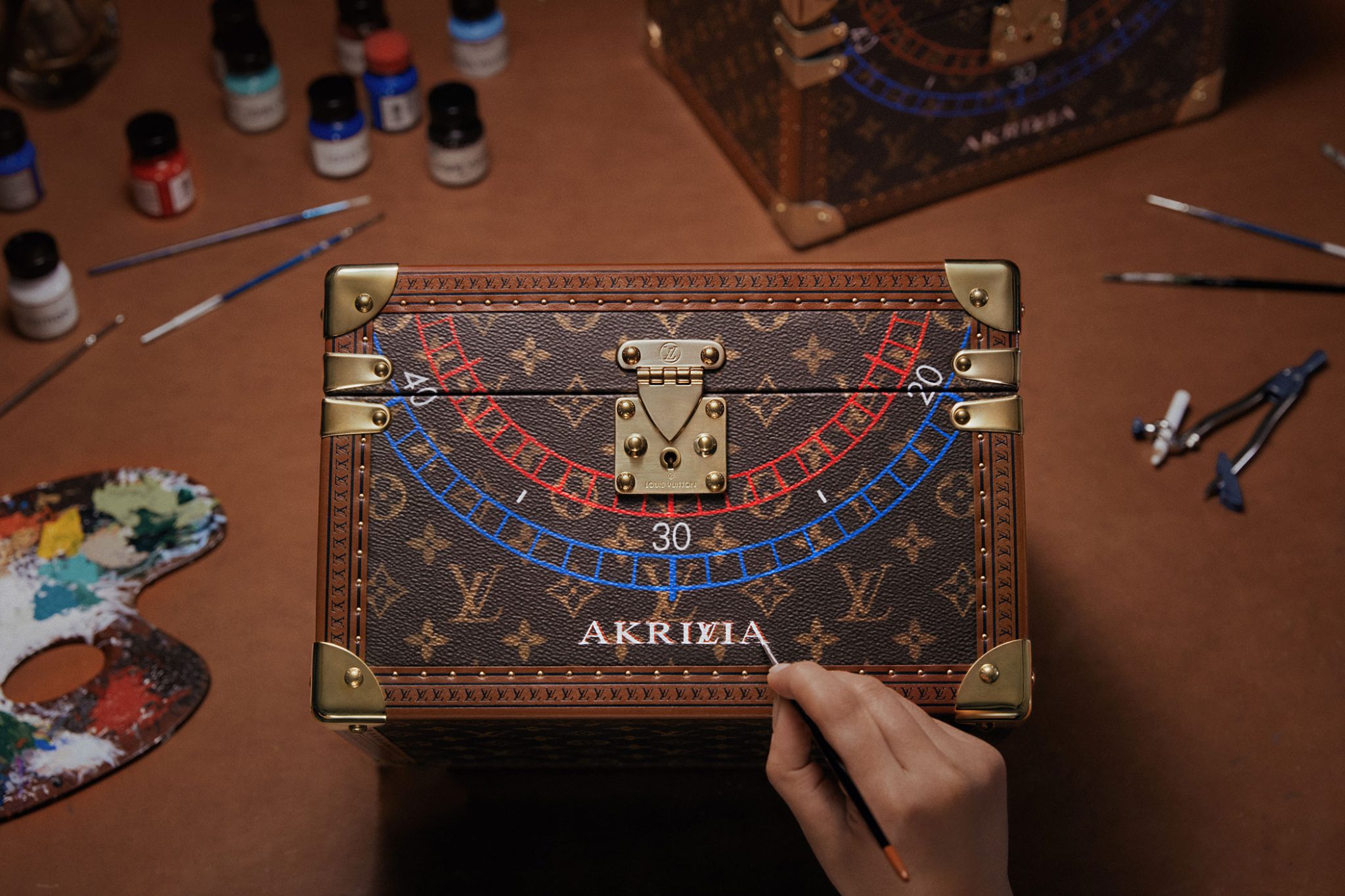
The presentation box also proudly bears the signatures of the creative masterminds behind it: Rexhep Rexhepi, Jean-Pierre Hagmann, and Nicolas Doublel. Likewise, the LVRR-01‘s natural cowhide leather strap (which acquires a delicate patina over time) features a platinum pin buckle made by the workshop of Jean-Pierre Hagman, while bearing his ‘JHP’ hallmark.
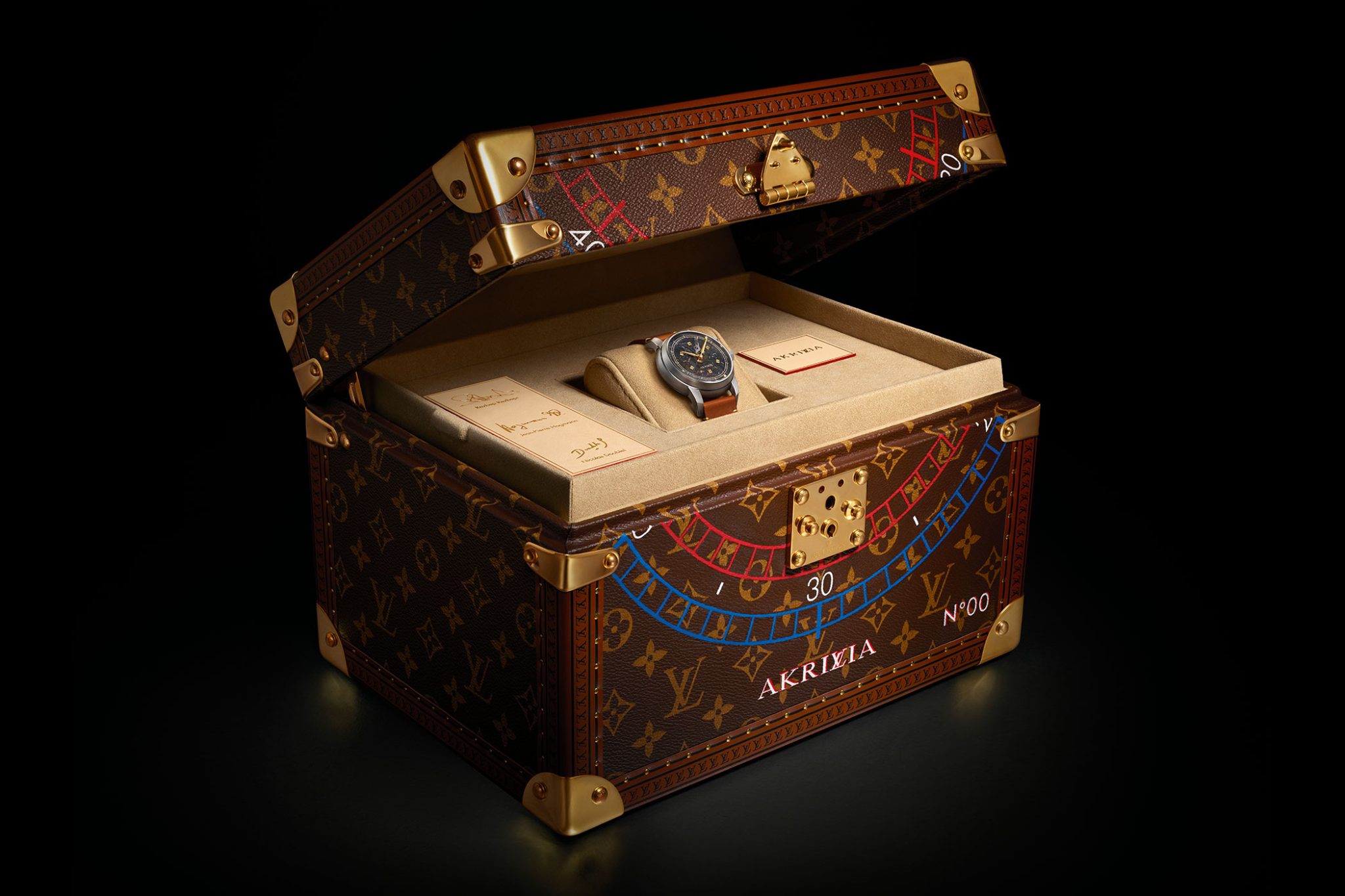
Finally, the price of the watch is 540,000 euros and, according to Rexhepi, the delivery of the watches will take one year, with each watch taking about a month (or 400 hours) to produce. Proceeds from the watch will go towards the Louis Vuitton Watch Prize.
akrivia.com | louisvuitton.com
FEATURES
Height: 9 mm
